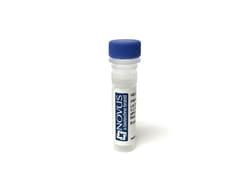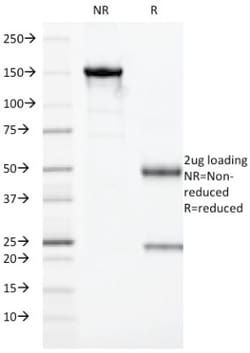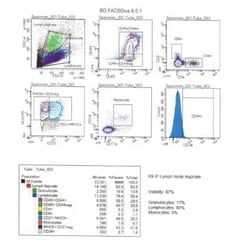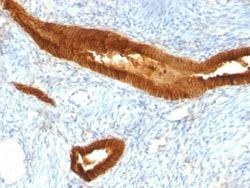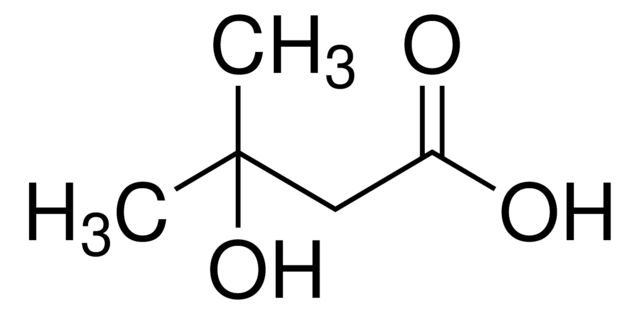HLA DQ Antibody (SPV-L3), Novus Biologicals™
Mouse Monoclonal Antibody has been used in 3 publications
Manufacturer: Fischer Scientific
The price for this product is unavailable. Please request a quote
Antigen
HLA DQ
Concentration
0.2 mg/mL
Applications
Flow Cytometry, Immunohistochemistry (Frozen), Immunofluorescence
Conjugate
Unconjugated
Host Species
Mouse
Research Discipline
Adaptive Immunity, Asthma, Immunology
Formulation
10mM PBS and 0.05% BSA with 0.05% Sodium Azide
Gene ID (Entrez)
3117
Immunogen
T4-positive CTL clone HG-38
Primary or Secondary
Primary
Content And Storage
Store at 4C.
Molecular Weight of Antigen
60 kDa
Clone
SPV-L3
Dilution
Flow Cytometry 0.5 - 1 ug/million cells in 0.1 ml, Immunohistochemistry-Frozen 0.5 - 1.0 ug/ml, Immunofluorescence 0.5 - 1.0 ug/ml
Classification
Monoclonal
Form
Purified
Regulatory Status
RUO
Target Species
Human, Porcine
Gene Alias
CD, CELIAC1DQ alpha 1 chain, DC-1 alpha chain, DQ-A1, FLJ27088, FLJ27328, GSE, HLA class II histocompatibility antigen, DQ(W3) alpha chain, HLA-DCA, HLA-DQA, leucocyte antigen DQA1, leukocyte antigen alpha chain, major histocompatibility complex, class II, DQ alpha 1, MGC149527, MHC class II antigen, MHC class II DQA1, MHC class II HLA-D alpha glycoprotein, MHC class II HLA-DQ-alpha-1, MHC class II surface glycoprotein, MHC HLA-DQ alpha
Gene Symbols
HLA-DQ
Isotype
IgG2a κ
Purification Method
Protein A or G purified
Test Specificity
Recognizes a DQ antigen, which is a dimer of 60kDa. The class II molecule is a heterodimer consisting of an alpha (DQA) and a beta chain (DQB), both anchored in the membrane. It plays a central role in the immune system by presenting peptides derived from extracellular proteins. Class II molecules are expressed in antigen presenting cells (APC: B Lymphocytes, dendritic cells, macrophages). The alpha chain is approximately 33-35kDa. It is encoded by 5 exons; exon 1 encodes the leader peptide, exons 2 and 3 encode the two extracellular domains, and exon 4 encodes the transmembrane domain and the cytoplasmic tail. Within the DQ molecule both the alpha chain and the beta chain contain the polymorphisms specifying the peptide binding specificities, resulting in up to four different molecules. Typing for these polymorphisms is routinely done for bone marrow transplantation. This MAb strongly blocks cytotoxicity activity of T4-positive cytotoxic T cell clones.
Description
- Ensure accurate, reproducible results in Flow Cytometry, Immunohistochemistry (Paraffin), Immunofluorescence HLA DQ Monoclonal specifically detects HLA DQ in Human, Porcine samples
- It is validated for Flow Cytometry, Immunocytochemistry/Immunofluorescence, Immunofluorescence.
